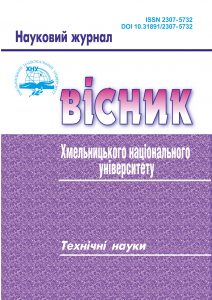FEATURES OF BUILDING A DATA ARRAY BASED ON A NEURAL NETWORK IN THE SPHERE OF THE INTERNET OF THINGS FOR THE HOTEL AND RESTAURANT BUSINESS
DOI:
https://doi.org/10.31891/2307-5732-2023-325-5-252-257Keywords:
data array, artificial intelligence, neural network, Internet of Things, sensor, intelligent system, hotel and restaurant businessAbstract
The article examines the principles of forming a data array based on a neural network in the field of the Internet of Things for the hotel and restaurant business. It has been identified that the Internet of Things generates a huge amount of unstructured data, and big data analytics is a key aspect. The concept of the Internet of Things represents a special value for the development of the hotel and restaurant business thanks to the data that can be obtained from connected elements and gadgets. Two theorems have been formulated that contribute to the disclosure of the principle of knowledge exchange that can be taken from human-computer interaction. It is determined that the assignment of the name of the economic entity should include words in the human language, and not abbreviations, codes or binary mapping. They can only be interpreted by machines that are technically more efficient in terms of storage space or network bandwidth. The principles of the theory of verificationism are revealed and the ways of adapting the structure of the data array are described. The structure of machine knowledge is schematically proposed, which is presented in relation to the formation of an array of data based on a neural network in the field of the Internet of Things for the hotel and restaurant business. The described structure has three knowledge bases: hypothesis, ontology, and parameters. It was determined that the proposed intelligent database of the data array can be applied to the Internet of Things in the field of hotel and restaurant business, regarding the autonomous exchange and accumulation of knowledge, and the platform, in turn, can use ontologies to integrate IoT devices with intelligent systems. The advantages and disadvantages of the model are described. It is noted that the advantage of this model is that IoT sensors in the cloud can learn from remote sensors in the background, regardless of the network latency connecting to the remote application, and the disadvantage is that network latency can become a bottleneck when the need in real-time decision-making is growing. It is emphasized that the implementation of the described algorithm for the formation of the data array, as well as the appropriate intellectual environment, will allow to reduce the threshold for developers to enter the field of solving problems using a neural network.

